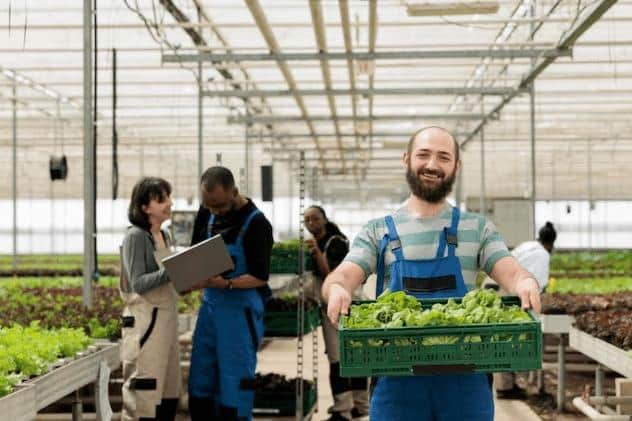Bridging the Gap: The urgent need for labour in modern garming
and live on Freeview channel 276
In the heart of every thriving agricultural community lies the backbone of our sustenance – the hardworking hands that till the soil and bring forth the fruits of labor. Despite technological advancements and the mechanisation of many farming processes, the age-old necessity for skilled and dedicated labour remains unshaken. In recent times, the cry for "Need labour for farming" resonates louder than ever, echoing the challenges faced by the agricultural sector in meeting the demands of a growing population and a changing landscape.
The changing face of agriculture:
Modern agriculture has evolved significantly, transitioning from traditional, labour-intensive methods to more technologically driven approaches. While this transformation has undoubtedly increased efficiency and output, it has also led to a gradual decline in the need for manual labour. Mechanisation, precision farming, and automation have become the norm, reducing the physical demands on farmers but creating a void in the traditional workforce.
Advertisement
Advertisement


Challenges faced by farmers:
The ongoing challenges in finding an adequate labour for farming are multifaceted. One of the primary issues is the shift in societal preferences towards urbanisation and non-agrarian careers. Younger generations are increasingly opting for jobs in urban areas, leaving rural communities with a diminishing pool of skilled agricultural workers. This trend not only jeopardizes the livelihoods of farmers but also raises concerns about the sustainability of the agricultural sector.
Seasonal peaks and troughs:
Farming is inherently cyclical, with peak seasons demanding an influx of labor to plant, tend, and harvest crops. The seasonal nature of agricultural work creates a dynamic demand for labor that is often difficult to meet. Farmers face challenges in finding reliable, skilled workers during critical periods, leading to potential losses in crop yield and financial setbacks.
Immigration policies and labour shortages:
In many countries, restrictive immigration policies further exacerbate the labour shortage in agriculture. The tightening of borders and increased scrutiny on migrant workers have limited the availability of a diverse and flexible labour force. Farmers are left grappling with a diminishing pool of workers, hindering their ability to adapt to the fluctuating demands of the agricultural calendar.
Rural depopulation:
The migration of young, skilled workers from rural to urban areas contributes significantly to the scarcity of labour for farming. As small towns and villages lose their younger populations, the remaining workforce may lack the necessary skills or physical capability to meet the demands of modern agriculture. This rural depopulation compounds the challenges faced by farmers, creating a vicious cycle of diminishing resources.
Advertisement
Advertisement
Solutions for bridging the labour gap:
Addressing the pressing issue of the labour shortage in farming requires a comprehensive and collaborative approach. Several strategies can help bridge the gap and ensure the sustainability of the agricultural sector:
Educational Initiatives:
Promote agricultural education and training programs to equip the younger generation with the skills needed for modern farming.
Collaborate with educational institutions to develop courses that highlight the potential career opportunities in agriculture.
Technological Integration:
Encourage the adoption of technology in farming practices to make the sector more attractive to tech-savvy individuals.
Advertisement
Advertisement
Invest in research and development to create user-friendly agricultural technologies that require minimal training.
Flexible Immigration Policies:
Advocate for more flexible immigration policies that address the specific needs of the agricultural sector.
Establish programs that allow temporary migrant workers to contribute to farming during peak seasons without facing undue legal barriers.
Community Engagement:
Foster a sense of community pride in agricultural traditions and values to encourage local youth to consider farming as a viable and honorable career option.
Advertisement
Advertisement
Establish mentorship programs connecting experienced farmers with young individuals interested in pursuing a career in agriculture.
Government Support:
Implement policies that provide financial incentives and support for farmers facing labor shortages.
Offer grants and subsidies for the adoption of technology and modern farming practices.
Conclusion:
The cry for "Need labour for farming" is not just a plea from farmers but a call to action for society as a whole. As we navigate the challenges of a rapidly changing world, it is crucial to recognise the importance of sustaining the agricultural sector. By implementing innovative solutions, fostering community engagement, and advocating for supportive policies, we can bridge the labour gap and ensure that the hands that feed us continue to thrive in the fields of abundance.